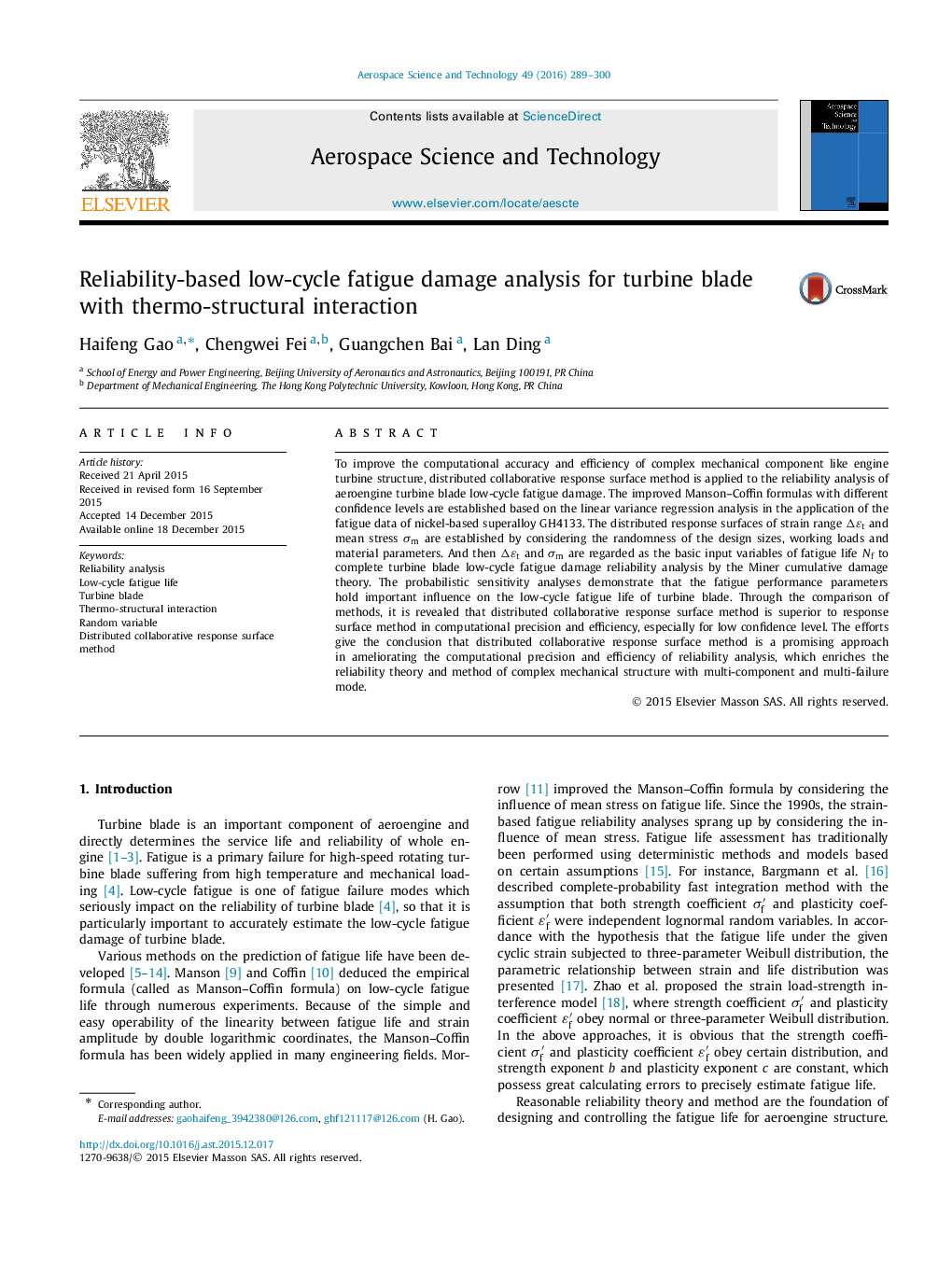| Article ID | Journal | Published Year | Pages | File Type |
|---|---|---|---|---|
| 1717756 | Aerospace Science and Technology | 2016 | 12 Pages |
To improve the computational accuracy and efficiency of complex mechanical component like engine turbine structure, distributed collaborative response surface method is applied to the reliability analysis of aeroengine turbine blade low-cycle fatigue damage. The improved Manson–Coffin formulas with different confidence levels are established based on the linear variance regression analysis in the application of the fatigue data of nickel-based superalloy GH4133. The distributed response surfaces of strain range ΔεtΔεt and mean stress σmσm are established by considering the randomness of the design sizes, working loads and material parameters. And then ΔεtΔεt and σmσm are regarded as the basic input variables of fatigue life NfNf to complete turbine blade low-cycle fatigue damage reliability analysis by the Miner cumulative damage theory. The probabilistic sensitivity analyses demonstrate that the fatigue performance parameters hold important influence on the low-cycle fatigue life of turbine blade. Through the comparison of methods, it is revealed that distributed collaborative response surface method is superior to response surface method in computational precision and efficiency, especially for low confidence level. The efforts give the conclusion that distributed collaborative response surface method is a promising approach in ameliorating the computational precision and efficiency of reliability analysis, which enriches the reliability theory and method of complex mechanical structure with multi-component and multi-failure mode.
